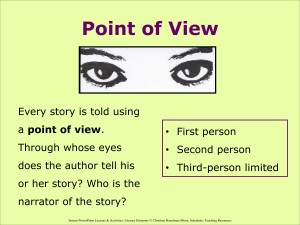John Douglass and Glenn Harnden’s chapter on Point of View was the reading for class this week.
In this chapter, they cover three ways to shoot while thinking of perspective. These three ways are POV shots, Perspective of the Storyteller, and Character Point of View.
This picture simply portrays exactly what Douglass and Harnden’s objectives were throughout this chapter. Each of these techniques are used for shooting specific scenes or specific genres when talking about film or TV.
For example, POV shots are most commonly seen in horror or dramatic movies. One example is the famous shower scene in Alfred Hitchcock’s Psycho, where the the camera goes back and forth from the shower to the eyes of the “mother” until the “mother” begins to commit the murder and the perspective is all from her point of view.
This particular angle in a film creates the suspense that is so often craved when watching a horror film. In this scene, there is also use of character point of view as well. Quick shots of her doing math at the table, or turning on the shower head are examples of this. Depending on the film, certain shots are more affective on the audience. Documentaries typically use Perspective of the Storyteller, well because that’s exactly what the storyteller is supposed to be doing in a documentary! With that said, it’s important to note that using this technique may be counteractive if used in the wrong setting or for too long, like most of these techniques. The key is to switch it up, but in a way that enhances the plot of the movie, show, etc.



